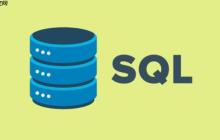-

- 解决 Spring Boot JPA 中 MySQL 数据检索空指针异常
- 本文旨在帮助开发者解决在使用SpringBootJPA从MySQL数据库检索数据时遇到的NullPointerException问题。通过分析实体关系映射、Repository查询以及潜在的配置错误,本文提供了一套完整的排查和解决问题的方案,并附带代码示例和注意事项,确保数据检索的正确性和稳定性。
- 后端开发 . spring-boot 376 2025-08-21 19:06:24
-

- Spring Boot JPA 数据检索空指针异常排查与解决
- 本文旨在帮助开发者诊断和解决SpringBootJPA项目中,由于实体类字段与数据库列名不匹配导致的数据检索空指针异常。通过分析问题代码、实体类定义和Repository接口,提供详细的排查步骤和解决方案,确保数据能够正确地从数据库加载到应用程序中。
- 后端开发 . spring-boot 352 2025-08-21 18:40:31
-

- 优化Spring Boot中多列表数据关联与持久化策略:以员工项目分配为例
- 本文详细阐述了如何在SpringBoot应用中,高效且准确地将两个并行列表(如项目列表和对应的月份数据)中的元素关联起来,并持久化到一个新的对象(EmployeeProject)中。通过分析常见的循环陷阱,如嵌套循环导致的重复数据或数据错位问题,文章提供了一种基于索引的迭代解决方案,确保数据的一一对应关系,避免了不必要的重复保存,并提升了数据处理的准确性。
- 后端开发 . spring-boot 688 2025-08-21 16:38:01
-

- JS 中如何插入 SQL?方法详解 JS 中插入 SQL 在前后端交互中的功能与优势
- 在JS中直接插入SQL是不可能的,因为JS是前端语言而SQL是数据库语言,需通过后端服务器作为桥梁实现交互;前端使用fetch等方法发送请求,后端接收后通过数据库驱动执行SQL并返回结果,前端再处理展示;选择后端技术栈应根据团队技能、项目需求等因素,常见方案包括Node.js+Express、Python+Flask/Django、Java+SpringBoot;防止SQL注入最有效的方法是使用参数化查询,同时需验证用户输入、遵循最小权限原则并定期更新组件;前后端数据传输格式优先选择JSON因其
- 后端开发 . spring-boot 1024 2025-08-20 14:29:01
-

- Spring RequestParam 参数校验:禁止空字符串和空白字符
- 本文介绍了如何利用SpringBoot的参数校验功能,优雅地禁止RequestParam接收空字符串""或仅包含空白字符的字符串。通过使用@Validated注解和JSR-303BeanValidation注解,无需额外的代码逻辑,即可实现对请求参数的有效性验证,提升API的健壮性和安全性。
- 后端开发 . spring-boot 335 2025-08-19 20:10:01
-

- SpringBoot3深度实践之启动优化_Java使用SpringBoot3构建高效应用的方法
- SpringBoot3启动优化需从依赖精简、Bean懒加载、自动配置排除、组件扫描范围控制、JVM调优及AOT编译等多维度入手,核心是减少启动时不必要的初始化负担;通过合理配置可显著提升启动速度,而GraalVMNativeImage虽能实现毫秒级启动,但存在构建复杂性和兼容性代价,需权衡使用。
- 后端开发 . spring-boot 272 2025-08-19 19:38:02
-

- 基于数据库动态配置 Spring Boot 应用属性
- 本文旨在提供一种解决方案,允许SpringBoot应用从数据库动态加载和配置属性,从而避免每次修改配置都需要重启服务器。通过自定义PropertySource,我们可以将数据库中的配置项集成到Spring的属性管理体系中,实现配置的动态更新和管理。
- 后端开发 . spring-boot 625 2025-08-19 19:10:01
-

- 动态配置:从数据库加载 Spring Boot 应用属性
- 本文介绍如何将SpringBoot应用的application.properties配置迁移到数据库中,实现动态配置加载,无需每次修改配置后都重启服务器。通过自定义PropertySource,从数据库读取配置信息,并将其添加到SpringBoot的环境属性中,从而实现配置的动态更新和管理。
- 后端开发 . spring-boot 1033 2025-08-19 18:54:28
-

- 通过数据库动态配置 Spring Boot 应用属性
- 本文介绍如何通过数据库动态配置SpringBoot应用的application.properties属性,从而避免每次修改配置都需要重启服务器的问题。我们将创建一个自定义的PropertySource,从数据库读取配置信息,并将其添加到SpringBoot的环境中。这使得我们可以直接在运行时从数据库获取配置,实现配置的动态更新,提高应用的灵活性和可维护性。
- 后端开发 . spring-boot 316 2025-08-19 18:54:19
-

- Spring Boot应用中Swagger UI访问路径的正确配置与实践
- 本教程详细阐述了在SpringBoot项目中正确集成和配置API文档工具SwaggerUI的方法,着重推荐使用现代化的springdoc-openapi-ui库。文章涵盖了从引入依赖、移除旧有配置到访问API文档和UI界面的完整流程,并提供了代码示例和注意事项,旨在帮助开发者高效解决“NomappingforGET/swagger-ui.html”等常见问题,提升API开发与调试效率。
- 后端开发 . spring-boot 1026 2025-08-19 15:28:23
-

- Java中不同返回类型转换策略:构建灵活的服务层数据映射
- 针对JavaSpringBoot应用中控制器和服务层返回类型不一致的问题,本文深入探讨了如何在不相关的对象类型(如Resresource和Excel)之间进行有效转换。文章将重点介绍自定义数据映射器的实现方法,包括手动映射和利用现有映射库的策略,旨在确保服务层始终返回控制器期望的特定类型,从而提升代码的健壮性和可维护性。
- 后端开发 . spring-boot 386 2025-08-19 14:30:11
-

- 表单中的访问控制怎么实现?如何限制数据访问权限?
- 表单访问控制需依赖后端权限验证与数据过滤,前端控制仅作辅助。核心是通过RBAC等权限模型定义角色权限,后端在用户访问时校验权限,结合SpringSecurity实现接口级控制,对敏感数据加密存储。前端禁用或隐藏字段不可靠,易被绕过,必须后端二次验证。复杂场景如行级权限,可通过MyBatis拦截器动态修改SQL添加过滤条件,或使用数据库视图、RLS框架实现。
- 后端开发 . spring-boot 726 2025-08-19 12:35:01
-

- 深入理解与实践:如何在Java服务层实现不同返回类型之间的转换
- 本文旨在解决Java服务层中常见的类型转换问题,特别是在SpringBoot应用中,当服务方法返回的类型与控制器期望的类型不一致时。我们将探讨如何通过自定义映射器(Mapper)将一个数据传输对象(DTO)转换为另一个,即使它们之间没有直接的继承关系,从而确保类型安全和代码的清晰性,避免使用泛型Object作为返回类型。
- 后端开发 . spring-boot 988 2025-08-19 11:14:40
-

- Java应用依赖部署策略:从JAR包到OS原生安装
- 本文探讨了Java应用程序及其外部依赖在服务器上的高效部署策略。从常见的UberJAR和分离式JAR部署,到推荐的ZIP包捆绑方式,以及针对Web应用的WAR包部署,再到利用JPackage实现OS原生安装包,我们将详细介绍各种方法的特点、适用场景及依赖升级处理方式,旨在提供安全、便捷的部署方案。
- 后端开发 . spring-boot 162 2025-08-18 23:42:22
-

- Java应用依赖部署策略与实践
- 本文旨在探讨Java应用程序及其外部依赖在服务器上的部署策略。我们将从常见的UberJAR和手动Classpath管理方法入手,深入分析其优劣,并重点介绍更规范、安全且易于维护的部署实践,包括将应用和依赖打包为ZIP文件、利用框架特定的部署机制(如WAR包),以及使用JPackage工具创建包含JRE的自包含安装包。文章还将涵盖依赖升级与维护的最佳实践。
- 后端开发 . spring-boot 589 2025-08-18 23:28:01

PHP讨论组
组员:3305人话题:1500
PHP一种被广泛应用的开放源代码的多用途脚本语言,和其他技术相比,php本身开源免费; 可以将程序嵌入于HTML中去执行, 执行效率比完全生成htmL标记的CGI要高许多,它运行在服务器端,消耗的系统资源相当少,具有跨平台强、效率高的特性,而且php支持几乎所有流行的数据库以及操作系统,最重要的是





























